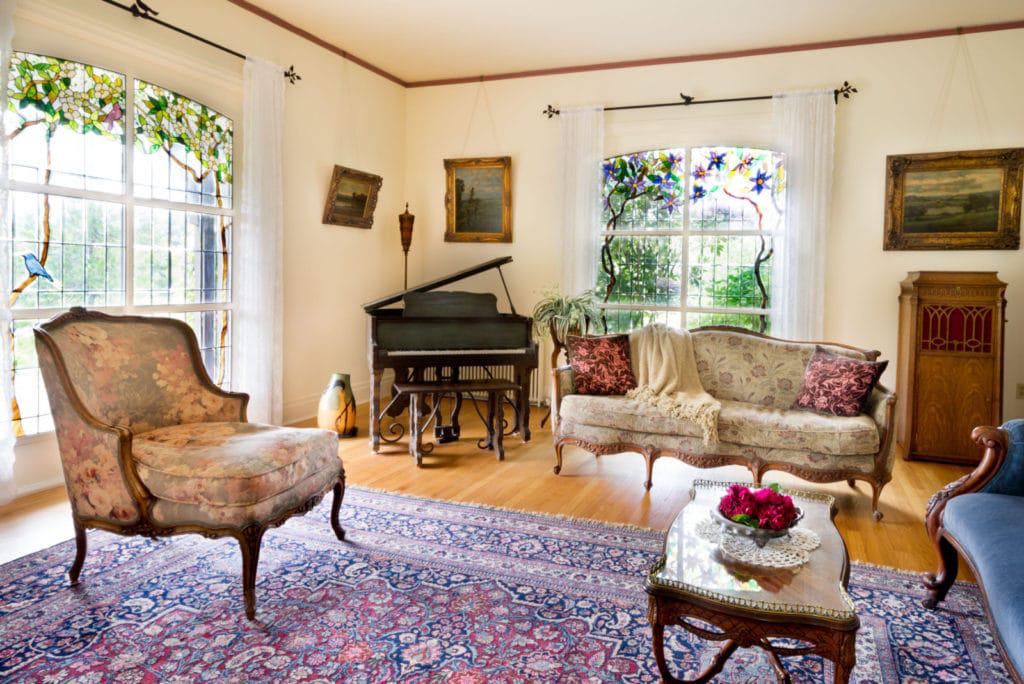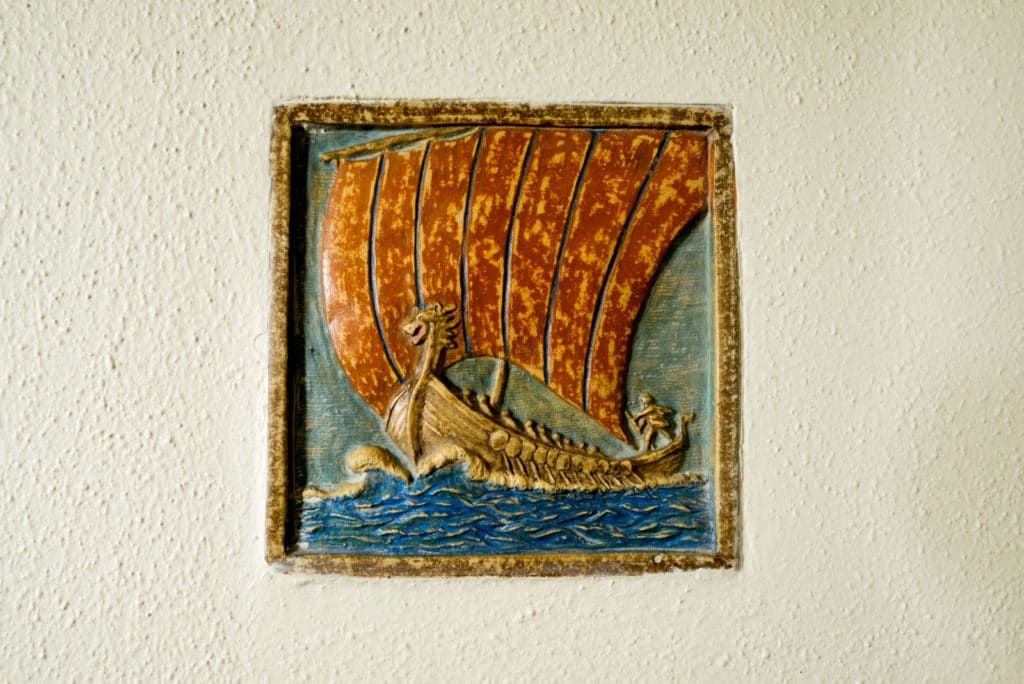
1932 Home
THE CHALLENGE — An attempt to incorporate a dishwasher into the cabinetry using a reciprocating saw resulted in a large hole in the cabinetry next to the sink. The support for the sink had also been compromised in the process, so the original tile on the counter top had cracks around the grout lines. The sink was listing slightly to the right.
The original cupboard doors had been lost to plywood doors with contemporary hardware. A big double door refrigerator stood in front of the window by the windowless kitchen door. The overhead lighting was a florescent light, the stove was oversized for the space, and the floor was covered in brown and white cow spot vinyl.
The kitchen was at a crossroads. Either it was compromised to the point of being totally replaced, or it was at the place where there was just enough left that it could be restored back to period.
The Vision
The realtor was pushing for the kitchen to be torn out and replaced. Instead, the owner chose to restore the original kitchen.
The first thing that was done was to stabilize the listing sink deck. The hacked-in dishwasher was removed and the undercounter support was replaced. Once that was done the front skirt and missing drawer were replaced. The cracked areas on the counter were repaired, along with the replacement of missing tile behind the faucet area.
The original kitchen door was found in the basement. It was a lovely Dutch door, with a glass in the upper half and beautiful crystal door hardware. The contemporary door was replaced with the original, which started bringing in much needed light.
To further the quest for light and authenticity, the large double door refrigerator was moved down into the basement for use there, and a 1930s Deco refrigerator was located, which fit the proportions of the kitchen. A drawer dishwasher was incorporated into the cabinetry and is completely hidden.


The Results
Karla sourced a gas stove from the 1930s with classic Deco styling; a Moore’s Vanity Stove with beautiful curving lines and a lid that closes down over the burners. The contemporary solid cabinet doors were replaced by more period correct glassed doors, which also helped to create a more open feel to the room.
It was necessary to paint the lower cabinets in a slightly darker green than the upper cabinets in order to visually ground them and help them to stand out from the green in the flooring. While work was happening with the cabinetry, the original tile was cleaned and re-grouted.
Green linoleum was used on the floor, with a period correct border inlay in red. To play off of the red inlay, the cabinet knobs and pulls were done in a ruby red glass.
Period lighting was found for the 3 ceiling light fixtures, and a sconce was installed above the stove as a source of light while cooking.
The last detail to go into this restoration was the wallpaper. The wallpaper is a reproduction taken from a scrap of period kitchen wallpaper that was typical from the 1920s and 30s. Rather than simply paper a feature wall, it was decided to install the wallpaper throughout the kitchen. The wallpaper was the last detail that ended up harmonizing all the other elements in this kitchen into a cohesive whole.




















